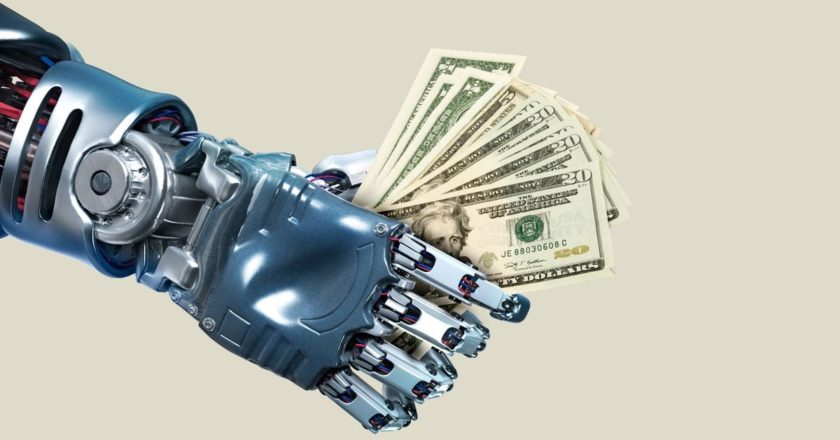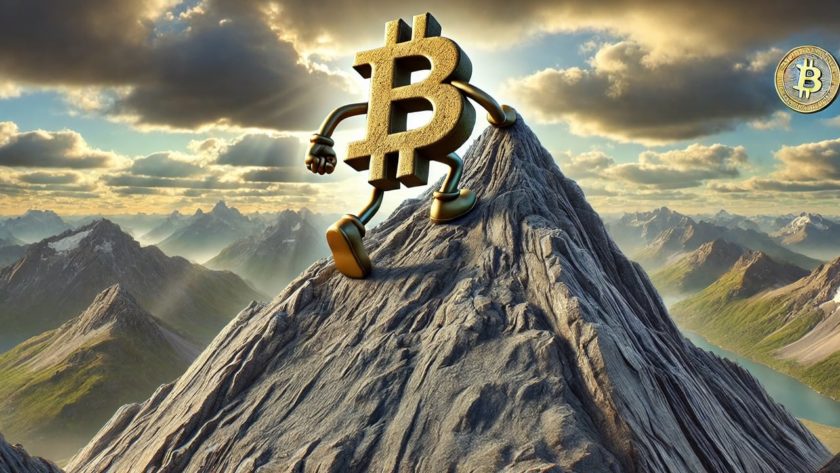The global monetary system has been centered around the United States dollar since at least the end of World War II when the 1944 Bretton Woods Agreement formalized the greenback’s ascent to unchallenged dominance. Control over the world’s reserve currency came hand in hand with a boost to the nation’s already enormous geopolitical influence, as well as the ability to run huge deficits at low cost.
Today, a growing chorus of experts believe that the dollar’s hegemony might be in a decline. America’s diminishing share of world trade, the expansion of China’s monetary power and the anticipated digitization of national currencies can all potentially erode the foundations of the incumbent financial order. So, what role could prospective central bank digital currencies and decentralized currencies such as Bitcoin (BTC) play in shaping the new international monetary system?
America’s exorbitant privilege
One of the most common terms to denote the U.S.’s outsize influence on international trade is “monetary hegemony,” which first appeared in Super Imperialism, a 1972 book by the economist Michael Hudson. Almost half a century after its publication, many of the ideas articulated in it still hold true.
As of this year, close to 60% of all foreign exchange reserves are still allocated in the dollar. Furthermore, around 40% of world trade is invoiced and settled in dollars, in addition to its 88% share of worldwide forex trades.
Being in a position to mint the currency that serves as the world’s unit of account comes with a slate of perks, putting the U.S. in a position of so-called exorbitant privilege. For one, because it pays for imported goods with its own national currency, the monetary hegemony faces no balance of payments constraint. This means that it’s not at risk of losing the ability to pay for essential imports or finance its current account deficit.
Being the largest debtor nation in the world, the U.S. has taken full advantage of the dollar’s position. As all parties engaged in international trade — governments, corporations and banks — are always in need of dollar liquidity, the market has a near-infinite capacity for new dollar-denominated debt. For decades, the U.S. has been spending way beyond its means, thanks to this simplified access to cheap international credits.
Additionally, this position of monetary dominance provides tremendous geopolitical leverage. By denying adversary nations access to the dollar-centered global financial system, the U.S. can inflict damage comparable to — or even beyond — that of a military intervention. Economic sanctions have long been a primary instrument of exerting pressure on nations deemed “rogue” by the State Department.
Shifting tides?
As Obama-era Treasury Secretary Jack Lew once warned, the centrality of the dollar to the global financial system hinges on other nations’ willingness to play by its current rules. In order to maintain the monetary status quo, Lew argued, the U.S. must not overuse economic sanctions in order to maintain the impression that these measures are only deployed against foreign governments for appropriate reasons and with sufficient justification.
The current administration has paid little heed to these words. President Donald Trump has ramped up the use of sanctions and other financial restrictions against states such as Iran and China, weaponizing U.S. economic power to a new level. As the economist Jeffrey Sachs argued, this has led to the formation of a counter-coalition of disgruntled nations, with China and Russia at the helm, that have accelerated their efforts to de-dollarize their economies. According to Sachs, this geopolitical shift, combined with the shrinking share of the U.S. economy in the global gross domestic product, could spell the dollar’s decline as the world’s reserve currency.
Steve Kirsch, the CEO of the digital currency platform M10, is on board with Sachs’s assessment of the dollar’s current international standing. Kirsch told Cointelegraph that “President Trump is arguably the biggest force driving the rest of the world away from the USD and seeking an alternative.”
At the same time, most experts agree that the potential demise of the dollar’s reserve-currency status is a rather distant prospect. Even amid the current pandemic-induced economic turmoil accompanied by a massive injection of dollar liquidity by the Federal Reserve, the markets’ faith in the incumbent reserve currency seems largely unfaltering. Marc Fleury, the co-founder and CEO of financial technology company Two Prime, commented to Cointelegraph:
“In times of turmoil, the U.S. still shoulders a lot of responsibility and enjoys good will. The country’s recent disgraces are irrelevant to this financial reality. The green back may be tired, but it is still mighty. The more we print dollars, the more it rallies.”
Centralized digital alternatives
One of the major reasons why the dollar’s hegemony persists is inertia inherent to the gigantic system of international trade. Since all the parties involved in it have been relying on the dollar for decades, one cannot simply decide to opt for an alternative, especially if it does not provide significant efficiency gains compared with the old ways. However, the impending rise of CBDCs could pose a feasible threat to the greenback’s status precisely because they could offer a faster and more convenient medium of exchange.
Some observers note that China might have the best shot at challenging the dollar’s dominant position if it successfully leverages both its expanding economic influence and the usability of its prospective digital currency infrastructure. Omri Ross, the chief blockchain scientist at multiasset trading platform eToro, commented to Cointelegraph:
“While the Chinese economy still trails behind the Western world in most per person measures in the short term, an aggressive expansionary approach to innovation in physical and digital infrastructure coupled with substantial investments in emerging markets has positioned the impending ‘digital yuan’ as a natural contender to the dollar.”
Ross added that mounting a successful monetary challenge to the U.S. would enable the Chinese government to exercise unrestrained influence on multilateral trade agreements, evade sanctions and even influence the balance of arms. Two Prime’s Fleury thinks that with the rise of China’s digital currency, two major power centers could emerge in the global monetary system, with some other national currencies close behind: “At a minimum, we will see a bipolar world banking system, with USD and Chinese Yuan denominations. The EUR/JPY may also be particularly important.”
Yet another alternative vision that the world’s central bankers are pondering is a global public cryptocurrency underlain by a basket of national currencies, a design that Mark Carney, a former governor of the Bank of England, referred to as a “synthetic hegemonic currency.”
Related: CBDCs With a Twist: The Public-Private Solutions Needed for Adoption
Although the rise of CBDCs appears unavoidable at this point, there are clear limits to the amount and kind of change these centrally controlled assets can bring about. John Deacon, the financial services lead at blockchain firm Dragon, told Cointelegraph:
“Their [CBDCs’] ability to disrupt the global status quo of the monetary system will be limited by the current increase in localization (due to trade wars and coronavirus), and by the need to protect their local banking sector. This opens up a niche for a non-CBDC digital currency (i.e. one that is not partisan to or affected by economic or trade policies of a single country or bloc) to serve as a store of value and medium of exchange.”
Regardless of whether a single state’s currency is paper-based or digital, it remains beholden to the national and international agenda of the nation’s government, argued Ido Sadeh Man, the founder of the cryptocurrency firm Saga Monetary Technologies, adding:
“We could see decentralized digital currency rise to prominence as the denomination of reserves — it is very possible. […] Imagining the future global monetary system, today, feels like a forked road: either we continue to layer technology onto a flawed system, or; we unleash and experience the full capabilities of technology to redesign and strengthen the global monetary model.”
A blueprint of a decentralized reserve currency
In a scenario where the dollar remains the global monetary hegemon or even one where another national currency eventually takes its place, the nation in charge of the world’s unit of account will still be able to leverage its status through it. The uncoupling of monetary dominance from geopolitical power looks more feasible if international trade finds a way to switch to a politically neutral currency. According to some analysts, the U.S.–China standoff could actually fuel the rise of some form of a neutral solution. eToro’s Ross observed:
“The geopolitical tensions between China and the U.S. ensuing from a race towards digital currency dominance could become a fruitful ground for the emergence of a globally independent settlement layer. Given that most businesses favor a stable macroeconomic environment, the incentive to settle transactions in a globally neutral currency would be huge. […] Whether or not the decentralized digital currency in this scenario would be Bitcoin is impossible to say. Bitcoin’s greatest challenges are still around volatility and adoption.”
James Wo, the chairman and CEO of venture capital company Digital Finance Group, is putting his money on Ether (ETH) rather than Bitcoin, telling Cointelegraph:
“I don’t think Bitcoin can replace USD, because one important functionality of fiat is to serve as a payment tool. In the short term there’s no solid method for Bitcoin to solve its scalability issues, thus it cannot be used as a payment method. The definition of Bitcoin is closer to being a commodity, like gold. I think Ethereum (ETH) has a chance of becoming the worldwide programmable currency.”
Kirsch of M10 does not believe that Bitcoin is up to the challenge, as he considers the prospective digital euro as the most likely contender for the throne: “Bitcoin is an accounting system in the cloud. The USD is legal tender. If there is an electronic EUR issued by the ECB [European Central Bank], that could be a challenger to the USD if it were easier to electronically transact 24×7.”
Fleury told Cointelegraph that, in his opinion, Bitcoin has “close to zero chances to reach reserve currency status.” Two main structural reasons for this are its volatility and its algorithmically limited supply. From a monetary policy standpoint, a global reserve currency has to be flexible. Yet another hurdle for Bitcoin is concentration of wealth, which promises to breed “shadow quadrillionaires” in the event it becomes a reserve currency.
Other observers view the chances of decentralized digital currencies to eventually take over the role of a global medium of exchange more optimistically. Miles Paschini, the founder and a director of crypto investment platform B21, emphasized the potential of cryptocurrencies to offer a more useable payment method that will see wide adoption:
“If any system provides easier access to funds, easier movement of funds and better inflationary controls, it is likely there will be a shift in adoption. This is a usability shift that can be realized through great security, user experience and real time payments. As of now all the necessary attributes don’t exist, but they are improving and in the future we certainly see technology providing these aspects.”
It is also possible that the emergence of many alternatives to the dollar will lead to a multipolar arrangement where no single currency enjoys a hegemonic status. Frank Schuil, a crypto advisor and investor, noted: “Most people believe a hybrid form is ultimately what we end up with: state based currencies, decentralized cryptocurrencies and corporate currencies.” Even given this potential diversity, Schuil believes that Bitcoin, as the “people’s money,” has the best shot at taking the winning spot.




